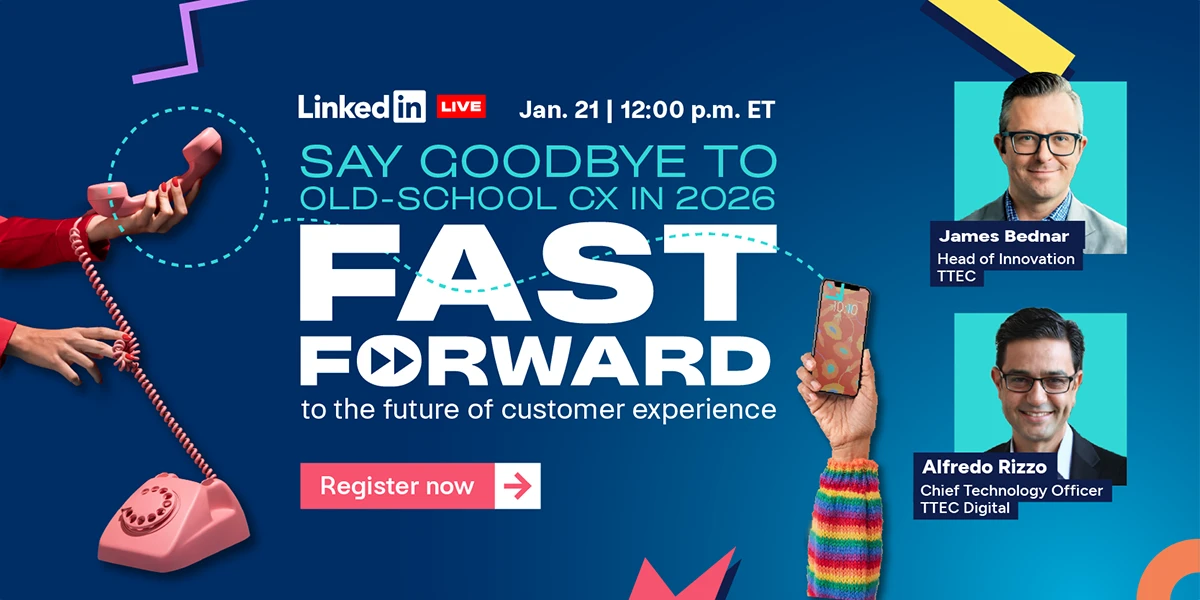Smart retailers know that consumers expect omnichannel experiences. Even smarter retailers understand that the omnichannel goal posts continue to move. Retailers must balance business objectives with the flexibility to adapt to new customer expectations and industry trends. Here are the key trends that define omnichannel experiences today and in the near future.
A few years ago, an omnichannel experience meant displaying the same deal across a brand’s website, app, and store and allowing customers to access their shopping cart through different channels and devices.
But that’s no longer enough, says Liz Miller, SVP of marketing at the CMO Council. “The cornerstone of a true omnichannel experience is not a wholly connected customer journey that doesn’t differentiate between devices—it’s actually looking at how the consumer is using each device across touchpoints and delivering a relevant experience in the channel the customer chooses.”
Miller points to the Gap’s reserve-in-store option as an example of a brand aligning itself with customer behavior across channels. The Gap, Banana Republic, and Athleta allow shoppers to reserve up to five items online that they can try on in a nearby store before purchasing. Nordstrom offers a similar service at its stores as well.
This approach plays to the combined strengths of each channel. Customers can shop online at their convenience, they don’t have to rummage through clothing racks, and they can be sure that the item is the correct size by trying it on.
What’s more, an SVP of stores and operations for Banana Republic told Forbes that customers are often “inspired by other items once they’re in our stores, and end up walking out with entire outfits based on the initial item they reserved.”
Delivering a connected consumer experience requires collaboration and synchronization across multiple fronts. Marketers, Miller notes, must “be in tune with in-store operations, supply chains, and have the technology to tie all the customer data points together.”
What's Next in Omnichannel Customer Experience
Fulfillment capabilities such as allowing customers to shop online and try on/pickup items in stores is quickly becoming table stakes. To stay ahead, retailers must upgrade their omnichannel capabilities to include the entire customer journey, Miller adds.
Forrester Research also observed this trend. “Retailers are developing omnichannel capabilities that extend far beyond fulfillment, spanning customer acquisition and engagement, inventory and order management, merchandising, and customer service,” writes Forrester Analyst Michelle Beeson. “A truly omnichannel operation that spans the customer life cycle will optimize revenue, deliver capital efficiencies like cost savings, spawn operational efficiencies, and improve the customer experience overall.”
Here are four areas where retailers are expanding and enhancing their omnichannel capabilities:
Not too long ago, the ability to order items online and pick them up in stores was an innovative omnichannel experience. But as customers come to expect that service, retailers must find new ways to differentiate their brand.
The key, Miller says, is to tailor the experience to the customer’s needs. “On omnichannel experience doesn’t mean trying to be everywhere with the same content all the time,” she says. “It means being relevant where your customer says relevance exists.”
- Inventory visibility
Instead of managing inventory by separate channels or stores, retailers are increasingly managing their inventory at an enterprise level to improve sales, slash waste, and move merchandise more efficiently and faster. Indeed, an eye-popping 98 percent of retailers cite inventory management across the enterprise as a “very important” capability driven by the IoT, reports RSR Research. - Insights-driven product planning
Retailers are keen to tap data about product returns, purchase patterns, and customer complaints for product and customer insights. The CMO Council reports that 36 percent of marketers point to smarter uses of customer data and shopper intelligence to differentiate their brand, but only 27 percent described their ability to source those insights as a key benefit, suggesting that many brands still lack the ability to reap the full benefits of their data. - Enhanced Marketplaces
While Amazon still controls the lion’s share of marketplace sales, Walmart and eBay are looking to capture greater portions with investments in personalized tools and rich content. EBay’s Image Search and Find it on eBay let shoppers use pictures instead of words to search for items on the mobile app. And Walmart unveiled plans for a new delivery service that will let customers order goods online via text message for same day delivery. Its online marketplace also includes a growing stable of retail partners such as Lord & Taylor. - AI-powered customer service
In addition to chatbots supporting associates in the background by serving up relevant information or handling simple customer requests, Google Duplex hints at the next level of an omnichannel service in which a virtual assistant can communicate with others on our behalf.
















